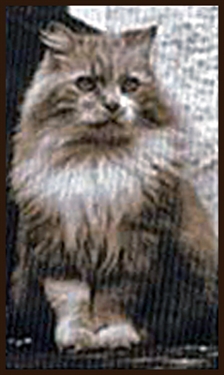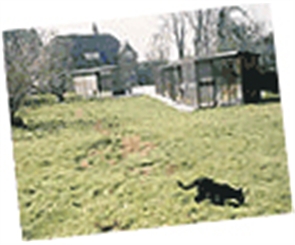Our History 1927-1950
 1927
1927 During the 1920s, cats were not seen as the companion animals they are today. Rather than pets, most were thought of as nothing more than pests, as little more than vermin. Concern was expressed at the ignorance of many people regarding the needs of the domestic cat. .So much so that on 16 May1927, a meeting of like-minded people was held at Caxton Hall, London, under the chairmanship of Miss Jessey Wade at which it was resolved… 'That a society be formed to be devoted exclusively to promoting the interests of cats and that its name be The Cats Protection League
The League set out to be an educational body, set up as a way to inform and educate the general public about the potential of cats but it soon became apparent that this would have to be complemented by practical action in order to succeed
 1931
1931 An early and significant step was taken in 1931, when the embryonic magazine The Cats' Mews Sheet was founded, with Miss Jessey Wade as the Editor. Its stated aim was to create a medium for suggestions and enquiries; to obtain the co-operation of the other animal societies and to educate the public. The importance of the magazine, which went on sale priced 1d, was that it not only helped The Cats Protection League to become better known, but it also gave a sense of unity to members. In 1934 the magazine changed name to The Cat and continues to inspire and inform its readers today
1935 Was an important year for The Cats Protection Lea

gue, gaining its first designated Headquarters, Prestbury Lodge, a sizeable house in Slough, through a legacy gift. The General Secretary Mr Albert Steward took up residence on the first floor, with the rest of the house and garden being used for cat work. Sheds and later cat houses were added to the garden to provide space for cat care; and rooms in the main house were adapted for the care of sick and injured animals. It soon became renowned as a place for rescuing cats that had been left abandoned. Towards the the end of the decade upwards of 200 people called at the headquarters for help each month as well as postal and telephone requests for aid
 1940
1940 The increased difficulty in funding clinical and rescue work during the war years, led to the introduction of The Tailwavers Scheme. 'To help relieve suffering amongst bombed out and starving cats in the blitzed areas'. Tailwaver is the English translation of the Greek word for cat 'aeluros' literally 'tailwaver'. Members enrolled their cats as Tailwavers at 5/-pa (25p). The scheme proved popular - 187 cats joined in the first year - and enabled The Cats Protection League to continue its work
 1947
1947 July saw the purchase of The Cats Protection League's first ambulance, a second-hand van which would replace the car originally donated as a charity vehicle. The new vehicle was painted in the then corporate colours of black and white
1950 The Cats Protection League's main aim during this time was to establish Shelters to provide 'a temporary refuge' for cats in need but the financial outlay for this was great. Then, in 1950 it received a legacy specifically for that purpose, in the form of a country property in Haslemere, Surrey

During these post-war years, things moved quickly for our organisation as it sought to change legislation for positive change. Click
here for the rest of our story
Click
here to watch a must see video charting the charity's progression from The Cats Protection League to Cats Protection!
Information courtesy of the main website at www.cats.org.uk